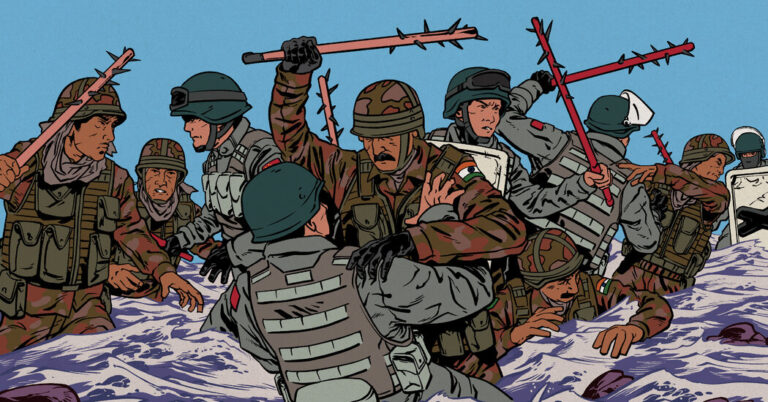India struck back. On the evening of August 29, 2020, a group of covert Indian guerrilla fighters began climbing the mountain slopes of eastern Ladakh alongside Indian Army soldiers. The mountains are part of the Kailash range, whose highest peaks reach 22,000 feet above sea level and stretch for about 500 miles southeast, beginning near the southern bank of Mount Pangong. Because of the rugged terrain, the highlands of the range have not been occupied by either India or China since the 1962 war. But now, nearly 60 years later, Indian commanders are hoping to seize some of these hills.
As the operation’s top commander, Lt. Gen. Y. K. Joshi, later revealed in a media interview, the operation, called Snow Leopard, was planned as a response to the PLA’s advance. By the evening of August 29, Indian forces had captured the strategic mountain peaks. The following morning, Indian tanks raced up the mountainside a few miles southeast of the range, enabling Indian forces to capture a high mountain pass known as Rezang La, a strategic location overlooking the Chinese garrison at Moldo on the other side of the range. By the time the PLA brought their equipment and troops up the slopes on their side, the Indians had already gained the upper hand.
The operation was “well planned, well thought out, well executed and a complete surprise,” Joshi said in a video interview with Nitin Gokhale, a veteran Indian military journalist who runs the foreign affairs website StratNews Global. (The Indian military has not publicly released information about the operation, but Gokhale provided me with a summary.) Indian troops suffered one casualty: Nima Tenzin, 53, of the Special Border Force, a guerrilla group set up 60 years ago to conduct covert operations against China. Tenzin, like others in the SFB force, was of Tibetan descent and was killed by a landmine left behind after the 1962 war.
As Joshi explained to StratNews, India’s objective in occupying Kailash was to force China to withdraw from areas the PLA had occupied after an incursion earlier that month. The strategy gave India an advantage in negotiations with China that ultimately led to success: In February 2021, the PLA dismantled the structures and withdrew its soldiers from the hilltop in exchange for Indian troops withdrawing from the site.
But that doesn’t mean China has given up. In fact, the PLA’s military presence in the broad area north of Pangong Lake has increased significantly since 2021. According to an analysis of satellite imagery taken on October 4, 2022 by the Center for Strategic and International Studies (CSIS), China has built a new PLA division headquarters just north of Pangong Lake, just 3.5 miles from the Line of Control. The support facility has “numerous trenches and defensive walls to store and protect equipment” on both sides, according to the CSIS report.

